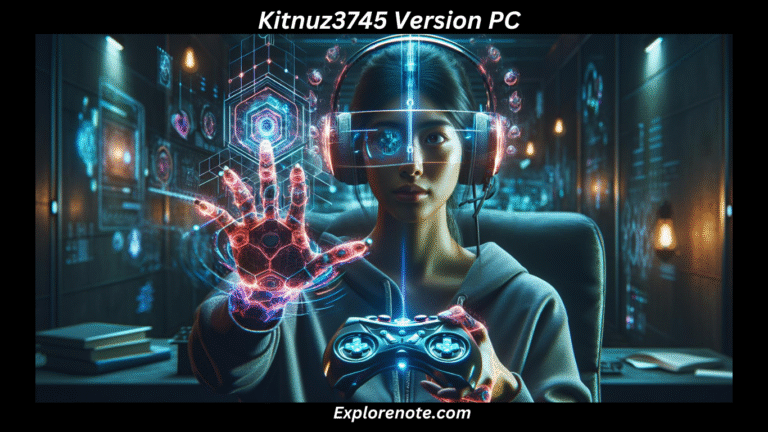Art has always been a profound tool for expressing identity, challenging norms, and narrating stories that transcend generations.
Two iconic artists who embody these values are Kerry James Marshall and Wendy Red Star. These trailblazers have used their work to spotlight cultural narratives, redefine representation, and inspire audiences worldwide.
This article delves into their unique artistic journeys, comparing their styles, themes, and contributions to contemporary art.
By weaving together their shared vision of cultural identity and distinct creative expressions, we aim to celebrate the power of art to shape perspectives.
Who Is Kerry James Marshall?
Kerry James Marshall is a renowned African American artist known for his large-scale paintings, installations, and sculptures that highlight Black identity and experiences.
Born in Birmingham, Alabama, in 1955, Marshall grew up during the Civil Rights Movement, which significantly influenced his art.
His works often depict African Americans in everyday settings, reclaiming representation and challenging the dominance of Eurocentric narratives in art history.
Themes in Kerry James Marshall’s Art
Black Identity
Marshall’s work celebrates the beauty and complexity of Black life. His use of deep, dark tones for skin color not only redefines the portrayal of Black figures but also rejects traditional Western standards of beauty.
Historical Reclamation
Through his art, Marshall revisits historical moments and reimagines them from a Black perspective. His paintings often incorporate elements of African American culture, from hairstyles to household items, weaving personal and collective histories.
Everyday Life
His art often portrays scenes of ordinary Black life, such as family gatherings or leisure activities, emphasizing the humanity and normalcy of these experiences.
Notable Works
“A Portrait of the Artist as a Shadow of His Former Self” (1980): One of his earliest works, this piece critiques the absence of Black figures in traditional art.
“Untitled (Club Scene)” (2013): A vivid depiction of joy and unity within Black communities.
Who Is Wendy Red Star?
Wendy Red Star, a contemporary multimedia artist of the Apsáalooke (Crow) Nation, explores Indigenous identity, cultural heritage, and stereotypes through her art.
Born in Billings, Montana, in 1981, she uses photography, installation, and mixed media to challenge misconceptions about Native American culture.
Themes in Wendy Red Star’s Art
Indigenous Identity
Red Star’s work is deeply rooted in her Crow heritage. She uses traditional motifs and symbols to narrate stories of resilience and pride while addressing historical erasure.
Cultural Stereotypes
She critiques the romanticized depictions of Native Americans in mainstream media and art. By blending humor and critical commentary, she exposes the inaccuracies in these portrayals.
Connection to Nature
Nature plays a significant role in Red Star’s art. Her works often include references to landscapes, animals, and natural elements that are integral to Indigenous life.
Notable Works
“Four Seasons” (2006): A satirical series that juxtaposes stereotypical depictions of Native Americans with artificial backdrops.
“Peelatchiwaaxpáash/Medicine Crow (Raven)” (2014): An exploration of her ancestor’s legacy through contemporary and historical lenses.
Comparing Kery James Marshall and Wendy Red Star
Cultural Identity and Representation
While Marshall focuses on Black identity and the African American experience, Red Star shines a light on Indigenous heritage and issues.
Both artists reclaim their narratives and challenge the exclusion of their communities from mainstream art.
Artistic Mediums
Marshall primarily uses painting and sculpture, emphasizing bold visuals and intricate details. In contrast, Red Star employs photography, installations, and multimedia to create immersive experiences.
Historical Critique
Both artists address historical inaccuracies and omissions. Marshall reclaims art history by centering Black figures, while Red Star critiques the romanticized myths surrounding Native Americans
Why Their Work Matters Today
Challenging Stereotypes
Both Marshall and Red Star dismantle stereotypes and create space for authentic representation. Their work challenges viewers to question preconceived notions about race and identity.
Empowering Marginalized Voices
By showcasing the beauty, resilience, and complexity of their communities, these artists inspire others to embrace their identities and tell their stories.
Bridging the Past and Present
Their art serves as a bridge between historical narratives and contemporary issues, encouraging dialogue about race, culture, and inclusion.
The Intersection of Art and Activism
Art has long been a powerful medium for activism, allowing individuals and communities to challenge social norms, spark critical conversations, and advocate for change.
Kerry James Marshall and Wendy Red Star embody the profound intersection of art and activism, using their creations to address issues of inequality, representation, and historical erasure.
Through their works, these artists inspire audiences to reflect on the complexities of identity and the systemic challenges faced by marginalized communities.
Let’s explore how they have transformed their artistic practices into platforms for activism and cultural reclamation.
1. Challenging Exclusion and Redefining Representation
One of the most significant ways Marshall and Red Star engage in activism is by challenging the historical exclusion of their communities from mainstream art.
Both artists reclaim space for Black and Indigenous narratives, creating works that celebrate their respective heritages while addressing stereotypes.
- Kerry James Marshall deliberately places Black figures in spaces traditionally dominated by Eurocentric ideals. His pieces often feature dark-skinned individuals in everyday settings, rejecting the tokenism or invisibility historically present in fine art. By doing so, Marshall forces viewers to confront the absence of Black bodies in art history and reimagines a more inclusive artistic canon.
- Wendy Red Star uses her art to dismantle the romanticized, inaccurate depictions of Native Americans perpetuated by media and art. Her works, often infused with humor and critique, challenge the “noble savage” trope and emphasize the modernity and resilience of Indigenous cultures.
2. Addressing Historical Erasure
Both artists view art as a means to address the historical erasure of their communities.
By reclaiming narratives and highlighting overlooked histories, they give voice to stories that have long been silenced.
- Marshall’s approach involves embedding references to Black history and culture into his work. Pieces like “School of Beauty, School of Culture” and “Many Mansions” critique societal structures while celebrating Black identity, joy, and resilience. His art challenges viewers to reconsider who gets to shape historical narratives and whose stories are left untold.
- Red Star’s work, such as “Peelatchiwaaxpáash/Medicine Crow (Raven)”, blends historical artifacts with contemporary aesthetics. By highlighting her ancestor’s legacy, she bridges the gap between past and present, ensuring that Indigenous histories remain relevant and accessible. Her meticulous research into Crow history often results in art that educates while challenging viewers to confront their assumptions about Native cultures.
3. Amplifying Marginalized Voices
Art becomes a tool for activism when it amplifies voices that are often ignored or silenced.
Both Marshall and Red Star excel in using their platforms to highlight the experiences of their communities, ensuring their stories resonate with broader audiences.
- Marshall’s work amplifies the beauty, complexity, and humanity of Black life, countering a history of misrepresentation in art. His bold imagery serves as both a celebration and a statement, demanding equal recognition for Black artists and their subjects.
- Red Star’s art brings the Apsáalooke (Crow) Nation to the forefront, challenging viewers to move beyond stereotypes and engage with Indigenous cultures as dynamic and evolving. Her ability to juxtapose traditional Crow motifs with contemporary media ensures her work speaks to both Indigenous and non-Indigenous audiences.
4. Advocating for Cultural Reclamation
Cultural reclamation is at the heart of both artists’ work. By revisiting and reinterpreting elements of their heritage, they reclaim what has been appropriated, ignored, or misrepresented.
- For Marshall, this means redefining Black identity in art. His figures are unapologetically Black, celebrating the richness of African American culture while rejecting Eurocentric ideals. His work reclaims spaces traditionally reserved for white subjects and transforms them into vibrant celebrations of Black existence.
- For Red Star, cultural reclamation involves elevating the stories, traditions, and symbols of the Crow Nation. Her installations often incorporate traditional regalia, historical photographs, and family narratives, allowing her to challenge colonial interpretations of Native history and assert her community’s agency.
5. Fostering Dialogue and Awareness
Art as activism also seeks to educate and provoke thought. By addressing themes like systemic inequality, racism, and cultural erasure, Marshall and Red Star foster dialogue and encourage audiences to reflect on their biases.
- Marshall’s art invites viewers to question their understanding of beauty, history, and privilege. By portraying Black life with such vibrancy and dignity, he challenges societal norms and pushes for greater inclusivity in the art world.
- Red Star’s work educates audiences about Indigenous histories, often overlooked or romanticized. Her playful yet incisive critique of stereotypes encourages viewers to reconsider their perceptions of Native American culture and history.
FAQs about Kery James MarshallWendy Red Star
Q1: What is the significance of “Kery James MarshallWendy Red Star” as a keyword?
The phrase combines the names of two iconic artists, highlighting their shared commitment to cultural identity and representation. It underscores their relevance in conversations about contemporary art and social issues.
Q2: How do Kerry James Marshall and Wendy Red Star influence new generations of artists?
Their work inspires emerging artists to explore themes of identity, heritage, and social justice while pushing creative boundaries.
Q3: What are some related terms to “Kery James MarshallWendy Red Star”?
Related terms include “Black identity in art,” “Indigenous representation,” “cultural reclamation,” and “contemporary activism through art.”
Q4: Where can I see their work?
Kerry James Marshall’s work is exhibited in major museums such as the Museum of Modern Art (MoMA) and the Whitney Museum. Wendy Red Star’s art is featured in institutions like the Denver Art Museum and the Metropolitan Museum of Art.
Q5: What lessons can we learn from their art?
Their art teaches us the importance of embracing diversity, questioning historical narratives, and amplifying marginalized voices.
Conclusion
Kery James Marshall and Wendy Red Star are powerful voices in the art world, each with a unique approach to exploring identity, history, and culture.
Their work not only redefines representation in art but also sparks critical conversations about race, heritage, and social justice.
By celebrating their contributions, we honor the transformative power of art to challenge perceptions, inspire change, and connect us all to a richer, more inclusive narrative.
Latest posts:
- How MyBigCartelStore.com Impacts E-Commerce: Insights, Growth & Future Trends
- Unlocking Web Success_ Expert Insights from Bizwebgenius.com Barbara Miller on Analytics & Industry Benchmarks
- Kitnuz3745 Version PC_ Ultimate System Optimization Software for 2025
- Explore TechGroup21.com – Your Ultimate Hub for Programming, Tech News & Cybersecurity Trends
- The Fusion of Gambling and Social Media_ How thehake.com Social Media Strategy Drives Player Retention










